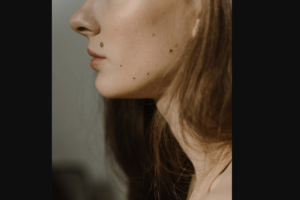I remember one morning a few years ago, I was greeted with flaky bits of dead skin on my legs. It caught me off guard because I always thought the skin on my legs was great. I realized I didn’t care for them as much as I should have.
So why did I have so much excess dead skin on my legs? The dead skin accumulated on my legs because I didn’t exfoliate them as often as I should.
I was consistent in exfoliating my face but often ignored the rest of my body. I also often wear pants, so my legs don’t get as much of a chance to breathe and naturally exfoliate.
Your skin goes through a natural turnover cycle around once a month. The upper layer of skin cells dies and shed. The new middle layer replaces it. Exfoliation is important for removing the dead skin; however, our legs are often overlooked.
Some of the best methods for removing dead skin on legs are as follows:
- Foot scrub
- Oatmeal scrub
- Pumice stone
- Vinegar – use 1 part water to 2 parts vinegar
- Paraffin wax treatment
- Epsom salt bath
Read on to learn more about removing dead skin from legs and how to avoid getting a build-up of dead skin.
Also, for an excellent product that can get rid of dead skin cells from your legs, take a look at our top pick, the Sebamed Fragrance-Free Gentle Hydrating Lotion Ultra Mild Dermatologist Recommended Moisturizer for Normal To Dry Sensitive Skin:
Click here to see it on Amazon.
What Causes Excessive Dead Skin?
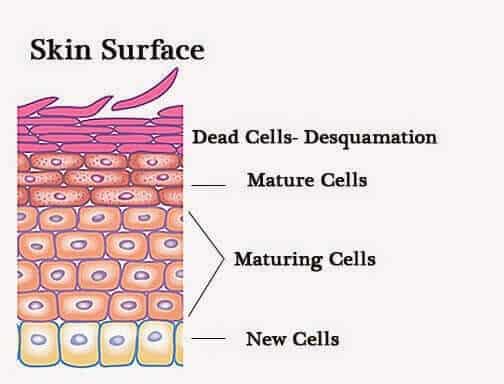
The skin is our biggest organ, with sebaceous glands that release natural oils to hydrate our skin and prevent it from drying out. Our skin also follows a process of turnover that sheds the dead skin cells on the top layer (epidermis) and replaces them with the skin cells from the middle layer (dermis).
Skin cells, also medically referred to as keratinocytes, are made up of a protein called keratin. During their life cycle, they move from the dermis to the epidermis and then to the outer layer of the skin.
The outer layer of the skin is called the stratum corneum and is where the skin cells die and are shed off the body through a process called desquamation. About 40,000 dead skin cells are shed off the top layer of the skin every hour. That’s a lot of skin cells! The process repeats itself roughly every 30 days.
So what causes excessive dead skin? It is important to exfoliate your skin at least once a month to get rid of any left-over dead skin that did not shed off your body naturally. A build-up of dead skin is a sign of not exfoliating properly or at all.
Exfoliation is defined as the process of removing old, dead skin cells from the top layer of your skin.
There are two types of exfoliation: chemical and mechanical. Chemical exfoliation uses chemicals, for example, beta hydroxy acids, to dissolve and break apart the dead skin – or dead cells, to be exact.
Mechanical exfoliation uses a tool, such as a washcloth, sponge, or brush to physically remove the dead skin off the top layer.
Why Do I Have So Much Dead Skin On My Legs?
So we know what dead skin is and how to get rid of it. So you are now wondering, why do I have so much dead skin on my legs?
Dead skin can build up anywhere on the body. It is easy to notice a build-up on the face. Also, the face is where we apply moisturizer all the time because we stare at it in the mirror each day.
Parts of your body, like your legs and feet, are often missed. We don’t always examine the skin down there. So it is common to avoid or forget taking care of that skin. It doesn’t have to be as cared for as the face, but it shouldn’t be ignored completely.
What’s more is that we often have socks and shoes covering our feet and pants covering our legs, especially during the colder months. This prevents the legs from breathing and makes it harder for the dead skin to shed off naturally.
How Do I Get Rid of Dead Skin On My Legs?
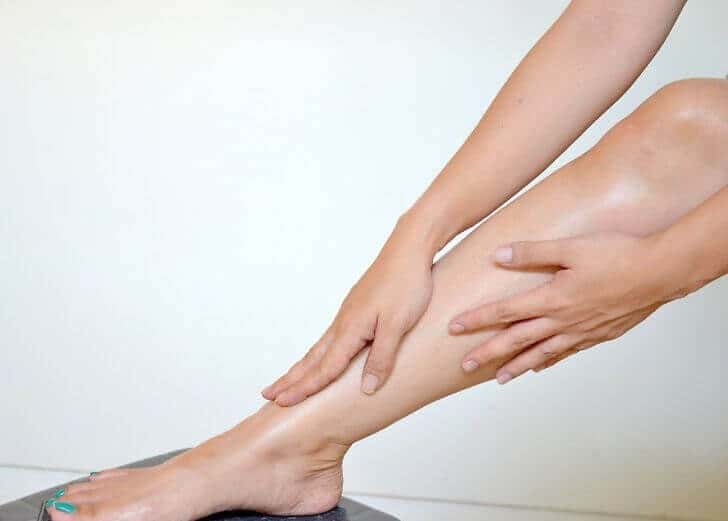
Some of the best methods for removing dead skin on legs are as follows:
- Foot scrub
- Oatmeal scrub
- Sugar scrub – create a gentle sugar scrub for your skin with 1/2 cup of brown sugar and 3 tablespoons of coconut oil or olive oil.
- Pumice stone
- Vinegar – use 1 part warm water to 2 parts vinegar
- Paraffin wax treatment
- Epsom salt bath
Now I want to share with you my own experience with finding patches of dead skin on my legs and how to remove dead skin.
When I realized I had all this dead skin on my legs a few years ago, I thought I should get a really abrasive scrub or maybe a face brush to buff that stuff off, but it’s actually the wrong thing to do.
I was really surprised at the dry, flaky, dehydrated bits hanging off my legs. So I thought I’d commit to doing the research to correct the issue. I wanted to make the skin looking smoother, conditioned, hydrated, and moisturized so that my legs look flawless and great all day.
When I don’t drink enough water, I notice that my skin starts to feel tight. When I’m in an air-conditioned environment, it’s going to also feel tight and start flaking. The dead cells on the surface of the skin become loose and then fall off. So what does one do when they are, you know, met or faced with this annoying skin situation?
One thing you don’t want to do is take a super abrasive scrub and start rubbing or scrubbing at your skin. This is actually going to exacerbate your skin problems.
You’re just going to start lifting up more dry patches of skin, and after you’ve washed off, you’re going to find that your skin is super red. So not only are you going to have texture to deal with, but you’re going to have to conceal and color correct the red bits of skin, especially if you need to apply makeup straight away.
First, shower or bathe as you normally do to remove all dirt, grime, sweat, and other nasty things. Use a good cleanser to spot treat the troubled areas, even if it is a face cleanser. You can use the same for your legs. See our posts reviewing our favorite cleansers and also our post on our favorite Image brand cleansers for removing dead skin cells.
I highly recommend you invest in a few really good face cloths or washcloths. I use my washcloth to scrub and polish my face with good results, so I started doing the same for my legs. It’s my dermatologist who got me onto using a washcloth many years ago.
What you want to do is take a bowl of warm water or hot water, dip your washcloth into it, and then just massage your legs with the washcloth in circular motions. Buff it all over to dislodge and remove those dry, flaky bits of skin.
I love this method and swear by it because it removes those really dry and loose patches of skin so quickly and so effectively. It doesn’t disturb the other bits of skin that are just semi-dry, and not sure what it’s doing. It just smooths out the skin and polishes it without causing more problems. It also doesn’t leave your skin super red.
Once you’re done buffing your skin, use essential oil to spot treat the parts of your legs that have the most build-up of dead skin. You can also apply the oil all over your legs. I use coconut oil, almond oil, or sometimes a blend. They are very light and quick absorbing.
I only apply a few drops to the problem areas, and I pat it in. Sometimes I’ll do a light swipe. I might also roll my hands over the skin.
I’m not going to rub or tug at my skin, and the reason for that is I don’t want to cause any redness. When my skin is discolored or red, I tend to use more and more products to fix the redness. This can cause more issues, more texture, and discoloration issues, so just be gentle, even with your leg skin.
Another alternative if you have super dry skin is to soak the washcloth in oil instead of warm water or hot water. Olive oil works great for soaking in and removing dead skin.
This will help your washcloth move easily over your skin, and the oil is also going to help condition your skin while you’re scrubbing and polishing. Olive oil is a very slippy product, so your washcloth is just going to glide over your skin.
It’s going to remove all those dead pieces of skin on your legs and reveal smooth skin that isn’t irritated, red, or raised. I do the same with crusty, old pimples – the pimples at the end of their life. I take a little bit of oil on my cloth, and I just polish around the dry blemish, and it removes it soon after.
After you’ve used the essential oil, follow up with a good-quality moisturizer. This is especially important for anyone with sensitive skin as sensitive skin can become irritated easily if it is not moisturized. See our post on our recommended moisturizers for every skin type or our favorite Mario Badescu moisturizers to find the right moisturizer for your skin.
Other Tips for Removing Dead Skin on the Legs
Dry skin can be caused by a number of different reasons. The causes for dry skin can be metabolic like a thyroid problem, kidney problem, or maybe liver problem. Ultimately you want to address those issues if they are the main cause.
On your own at home, what you can do is you want to put the hydration back into the skin. Keeping in mind that what causes the skin to get dried is evaporation through the pores of the skin.
The skin loses moisture on a regular basis for people with dry skin, especially during the cooler months. Those without dry skin are able to maintain the moisture inside much easier.
When there’s excess dead skin on the surface of your skin, usually what you would do is you would use a pumice stone to remove the outer layers of that dead skin. There are also different types of moisturizers that you can use if there’s an issue with the excess dry skin.
For example, you could use something like Kerasal Ultra 20, which has a urea base in it. What it does is it exfoliates the skin to clear it of dead skin, then you can follow up with your regular daily moisturizer.
You can also build in natural treatments such as apple cider vinegar which is effective at sloughing away dead skin. You can spot treat the dead skin patches with the vinegar and let them soak in, or gently rinse off after. Always remember the last step is to moisturize so as to lock in the moisture and prevent the legs from drying out again.
Typically a moisturizer would be something in the line of shea butter, which is good, and it doesn’t have any parabens or chemicals that are bad for you. That’s usually what I recommend. Vaseline can be used as well.
That’s also a fairly neutral ointment. A & D ointment is also something that can be used to prevent moisture from escaping your skin.
Conclusion
Our legs are often covered by pants that prevent the skin from breathing. This makes it harder for the dead skin to shed off naturally. Also, it is less common to exfoliate legs. Exfoliation gets rid of extra dead skin, so if you don’t exfoliate, dead skin can, and ill build up.
Skin follows a natural turnover cycle about once a month where dead skin is shed off and replaced by new skin. Try the 6 tips mentioned earlier for removing dead skin on legs:
- Foot scrub
- Oatmeal scrub
- Pumice stone
- Vinegar soak
- Paraffin wax treatment
- Epsom salt bath such as Tea Tree Oil Foot Soak with Epsoak Epsom Salt
Click here to see it on Amazon.
All the dead skin won’t shed off by itself naturally, so there will be some leftover. To get rid of this remaining dead skin, you can exfoliate – either through chemical exfoliation or mechanical exfoliation.
How I got rid of the dead skin on my own legs was to use gentle mechanical exfoliation with a washcloth soaked in warm water. I then applied essential oil (or you can even apply olive oil) and then followed up with a moisturizer. I repeated this process every other day, and my legs looked much, much better.






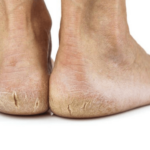
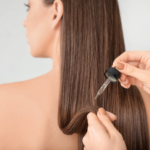
![How to Get Dead Skin Off Lips [6 Natural Remedies] how to get dead skin off lips](https://skincaregeeks.com/wp-content/uploads/2021/04/how-to-get-dead-skin-off-lips-150x150.jpg)
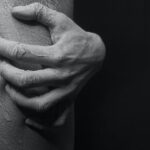
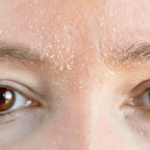

![Read more about the article Pinprick Red Dots on Skin Not Itchy [Causes and Treatments]](https://skincaregeeks.com/wp-content/uploads/2021/04/pinprick-red-dots-on-skin-not-Itchy-300x200.jpg)
